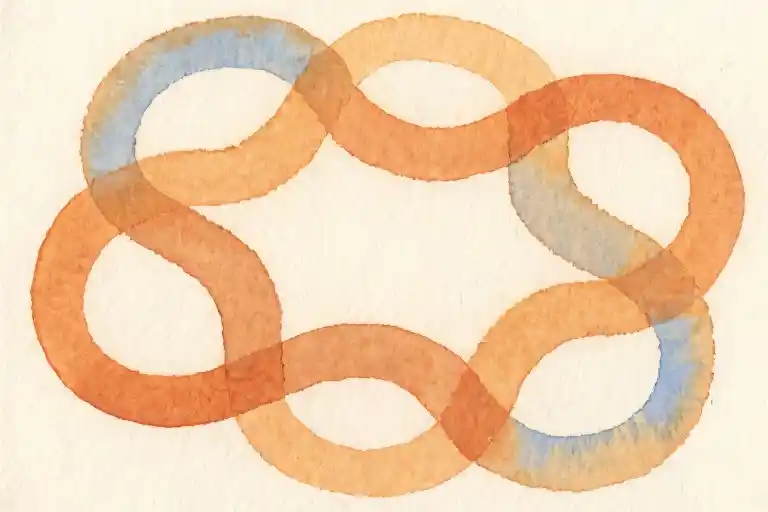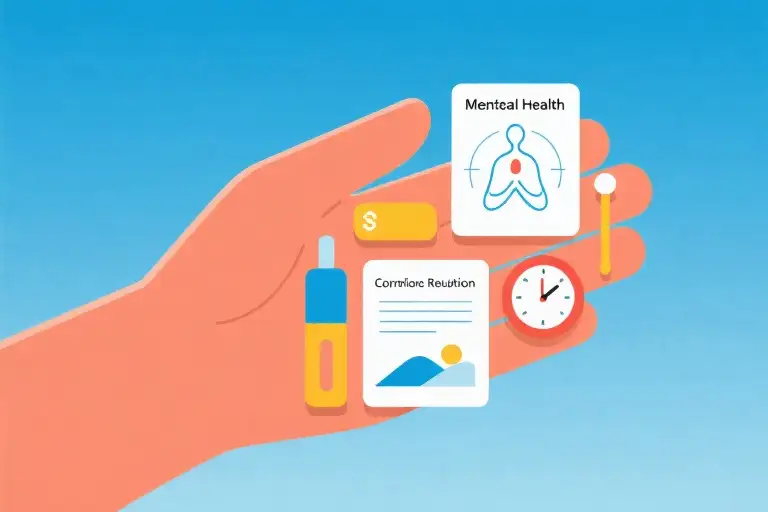The notification popped up at 11:47 PM as Sarah scrolled through her work emails. “Birthgirl! We miss you!” read the group text under a blurry photo of champagne flutes clinking around an empty chair – her chair. For the third year running, she’d forgotten her college roommate’s birthday gathering. The calendar reminder she’d set two weeks ago had been buried under back-to-back client meetings.
Sarah stared at the screen, thumbs hovering. A proper apology would require explaining why the McKinsey promotion track demanded 80-hour weeks, how her Uber Eats history showed meals eaten after midnight, or that she’d started taking melatonin to quiet the guilt about unanswered texts. Instead, she typed “So sorry! Next round’s on me” with three heart emojis and turned off her phone.
That hollow feeling? You know it too. The creeping realization that your “in case of emergency” contacts have become “if I have time” maybes. When was the last time you:
- Had someone call just to hear your voice after a bad day?
- Shared an inside joke that required zero context?
- Felt truly seen without performing a polished version of yourself?
Go check your call log right now. Scroll past the Uber drivers, pharmacy reminders, and work Zooms. How many names left could you dial at 2 AM with snotty tears and no explanations? These aren’t just contacts – they’re your emotional first responders, the living, breathing reasons your life has color beyond productivity spreadsheets.
We’ve all been Sarah. The modern friendship recession isn’t about malice – it’s death by a thousand “I’ll text you later”s. A 2023 Pew Research study found 42% of adults under 45 have lost touch with at least three close friends since the pandemic. But here’s what no productivity hack will tell you: Losing core friendships isn’t just sad – it’s metabolically expensive. UCLA researchers found people without strong social bonds have 50% higher cortisol levels, equivalent to smoking 15 cigarettes daily.
Your real friends aren’t luxury items. They’re the operating system that makes everything else function – the ones who remember your coffee order, your childhood trauma triggers, and which ex you’re definitely not over. They’re the living archives of who you’ve been and who you’re becoming. Lose them, and you’re not just losing companionship – you’re losing mirrors to your best self.
So let’s start with this: Open your favorites list. Who’s still there? Who’s drifted away? And most importantly – who’s worth fighting to keep?
The Vanishing Act: Why We’re Losing Our Core Friends
We’re living through the great friendship recession of our time. A recent study by the Survey Center on American Life reveals adults report having fewer close friendships than ever before, with nearly half of Americans (49%) saying they’ve lost touch with at least three close friends in the past decade. Our social circles are shrinking at an alarming rate, and the culprits might surprise you.
The Three Silent Killers of Modern Friendship
1. The Busyness Epidemic
Our calendars have become battlegrounds where friendships quietly lose. That “quick coffee” keeps getting rescheduled, the birthday text goes unsent, and before we know it, months have slipped by. Psychologists call this “friendship fade” – the gradual erosion caused not by conflict but by simple neglect. In our productivity-obsessed culture, we’ve mistakenly categorized friends as “non-urgent” when they’re actually the infrastructure of our emotional wellbeing.
2. The Digital Mirage
Social media has created the illusion of connection while starving us of the real thing. Scrolling through curated highlights gives us the dopamine hit of social interaction without the nutrients of true friendship. Research from the University of Pennsylvania shows passive social media use actually increases loneliness. We mistake 200 birthday emojis for meaningful connection, while the friends who’d show up with soup when we’re sick drift away.
3. The Vulnerability Block
Adult friendships require a courage we often lack – the willingness to say “I’m not okay” or “I miss you.” Brené Brown’s research on vulnerability reveals our deepest fear: “What if I reach out and they don’t care?” So we keep conversations light, hide our struggles, and wonder why friendships feel shallow. The very depth we crave becomes the thing we systematically avoid.
The Hidden Cost of Lost Connections
The Harvard Study of Adult Development, the longest-running happiness study, proves what your gut already knows: quality relationships are the single strongest predictor of long-term wellbeing. Losing core friends isn’t just emotionally painful – it’s biologically damaging. People with weak social ties have:
- 50% increased risk of early mortality (comparable to smoking 15 cigarettes daily)
- 29% higher likelihood of developing coronary heart disease
- Weakened immune systems and increased inflammation markers
Yet we treat these vital relationships as disposable. That coworker who remembers how you take your coffee might do more for your health than your gym membership. The childhood friend who can recount your embarrassing middle school phases might be more protective against dementia than crossword puzzles.
Reversing the Trend
The good news? Unlike economic recessions, the friendship recession has simple (though not easy) solutions:
- Schedule Friendship “Maintenance Checks” – Mark quarterly reminders to assess: “Who have I been neglecting?”
- Upgrade Digital Interactions – Replace likes with voice notes, comments with video calls
- Practice Friendship Vulnerability – Share one real struggle in your next catch-up instead of defaulting to small talk
These aren’t just people we’re losing – they’re the witnesses to our lives, the keepers of our stories, the ones who make the unbearable beautiful. In the next section, we’ll explore exactly what makes these core friendships irreplaceable. But first, ask yourself: when did you last have a conversation that left your soul feeling fed rather than your calendar feeling full?
The Irreplaceable Human Chargers: 5 Types of Core Friends You Can’t Afford to Lose
In the chaos of modern life, certain people function as emotional power banks – the ones who recharge us simply by existing in our lives. These aren’t just friends; they’re life-support systems wearing casual clothes. Through decades of psychological research and countless personal stories, we’ve identified five archetypes of core friends who make the difference between loneliness and belonging.
1. The Mirror Friend (Truth-Teller)
These rare individuals reflect your authentic self back to you – the good, the bad, and the unflattering angles you’d rather ignore. They’re the ones who’ll say “That outfit does nothing for you” when everyone else stays politely silent, or point out when you’re settling for less than you deserve.
Why they matter:
- Prevent self-deception by offering honest perspectives
- Challenge growth while affirming core worth
- Create psychological safety for vulnerability
Real-world example: Sarah interrupted her best friend’s third apology for a cancelled plan with: “Stop performing guilt. I know you’d be here if you could.” That moment of calling out performative people-pleasing sparked months of therapy breakthroughs.
2. The Memory Keeper (Time Capsule)
These human archives remember details even you’ve forgotten – your first heartbreak song, that inside joke from college, how you took your coffee before quitting caffeine. They’re living monuments to your personal history.
Why they matter:
- Combat “time blindness” that makes life feel fragmented
- Provide continuity across life chapters
- Safeguard your origin story when you lose your way
Connection tip: Create shared rituals like annual “then vs now” conversations comparing current challenges to past obstacles you’ve overcome together.
3. The Silent Safehouse (Pressure-Free Zone)
With these friends, you can share a couch for hours without exchanging a single word, yet leave feeling profoundly understood. They’ve mastered the art of companionable silence – no performative chatting, just peaceful coexistence.
Why they matter:
- Counteract the exhaustion of social performance
- Model unconditional presence without demands
- Create space for thoughts to settle organically
Modern adaptation: For long-distance versions, try parallel activities over video call – both reading or working quietly with occasional check-ins.
4. The Joy Amplifier (Unconditional Celebrant)
While others offer sympathy, these friends specialize in enthusiasm. They’ll throw confetti over your 3am creative ideas, cheer for small wins like you’ve won the Nobel, and never qualify their excitement with “but…”
Why they matter:
- Counterbalance cultural negativity bias
- Reinforce positive neural pathways
- Give permission for unfiltered happiness
Protection tip: Notice if you’re only reaching out to them when distressed. Schedule some purely celebratory check-ins.
5. The Reality Tuner (Grounded Perspective)
When you’re lost in catastrophizing or magical thinking, these friends gently recalibrate your perspective. Not through harsh criticism, but by asking the right questions to help you self-correct.
Why they matter:
- Prevent isolation in distorted thinking
- Offer alternative narratives during crises
- Balance emotional support with practical wisdom
Healthy boundary: They’re not free therapists. Express gratitude when they help you regain footing.
These five friendship types form an emotional ecosystem – remove one, and you’ll feel the imbalance. Yet in our productivity-obsessed culture, we often treat these relationships as luxuries rather than necessities. The truth? Your mirror friends and memory keepers aren’t just nice-to-haves; they’re the scaffolding that holds your mental health together when everything else shakes.
Notice any gaps in your circle? Most of us naturally attract 2-3 types but miss others. That’s normal. The goal isn’t collecting all five like friendship Pokémon, but recognizing which supportive functions might need strengthening in your life.
Tomorrow, we’ll explore practical strategies for nurturing these connections in a time-starved world. For now, try this:
- Mentally map which friends fill which roles
- Send one quick appreciation for a specific instance they showed up this way
- Notice if any category feels particularly empty – that’s your friendship growth edge
The 21st Century Friendship Maintenance Guide
In an era where our attention is fragmented across endless notifications and virtual interactions, maintaining deep friendships requires intentional strategies. The good news? Quality connection isn’t about quantity of time, but quality of presence. Here are three tailored approaches to keep your core relationships thriving in modern life.
For Long-Distance Friendships: Themed Calls + Emergency Codes
Physical distance no longer means emotional distance when you implement these two powerful tools:
- Annual Themed Video Calls
- Move beyond “catch-up” fatigue by establishing an annual tradition with specific themes. Examples:
- Growth Audit: Each shares one personal breakthrough and one area needing support
- Time Capsule: Revisit your favorite shared memory from the past decade
- Future Scripting: Co-create imaginary scenarios for your next reunion
- Pro Tip: Schedule these during meaningful dates (birthdays, friendship anniversaries) for automatic reminders
- Emergency Signal System
- Create three coded phrases for different needs:
- Code Pineapple: “I just need you to listen without solutions”
- Code Lighthouse: “I’m lost and need your perspective”
- Code Blanket: “Send me comfort memes/playlists”
- Works via text, email subject lines, or even Instagram DM emojis
For Social Anxiety Friendships: Asynchronous Bonding
Deep connection doesn’t require real-time interaction. Try these low-pressure methods:
- Voice Memo Diaries
- Exchange 2-3 minute audio updates like modern voicemails
- Perfect for:
- Sharing small wins (“Saw this sunset and thought of you”)
- Processing thoughts aloud without interruption
- Collaborative Documents
- Create shared spaces that evolve over time:
- Recommendation Hub: Books/movies you think they’d love
- Gratitude Log: Moments you appreciated about each other
- Inside Joke Encyclopedia: Preserve your unique humor
- Watch Party Alternatives
- Use platforms like Teleparty for commentary-free synchronized viewing
- Follow up with staggered reactions via:
- Timestamped text reactions (“3:22 – THAT plot twist!”)
- Reaction GIF collections
The Universal 3×3 Maintenance Formula
For all friendship types, this minimalist approach delivers maximum connection:
- Monthly 3×3 Practice
- 3 Minute Micro-Checkins:
- Voice note while commuting
- Shared photo with caption
- Forwarded article with “This made me think of our conversation about…”
- 3 Quality Interactions Monthly:
- Rotate between:
- Memory Lane (remind them of a meaningful shared experience)
- Present Tense (ask one thoughtful “how are you really?” question)
- Future Vision (“What’s one thing you’re excited about next month?”)
- 3 Annual Deep Dives:
- Quarterly 15-minute video calls focusing on:
- Relationship health check (“What works well in how we connect?”)
- Personal growth updates
- Mutual support planning
The Secret Sauce: Consistency beats intensity. These small but regular investments compound into unbreakable bonds. As research from the University of Kansas shows, it takes about 50 hours to move from acquaintance to casual friend, but only 5-10 quality hours annually to maintain an established close friendship.
“The best friendships aren’t maintained through grand gestures, but through the accumulated weight of small, authentic moments.”
Digital Age Pro Tips
- Notification Alchemy: Tag important friends with special notification tones/icons for instant emotional context
- Automated Affection: Set recurring calendar reminders for:
- Milestone acknowledgments (work anniversaries, pet birthdays)
- Random appreciation prompts
- Offline Tokens: When digital feels insufficient:
- Mail handwritten postcards using services like TouchNote
- Create Spotify playlists that evolve with your friendship
Remember: In our hyper-connected world, true connection has become the ultimate luxury. By implementing these tailored strategies, you’re not just preserving friendships—you’re cultivating life-giving sanctuaries in an increasingly fragmented landscape.
The Final Call to Keep Your Core People Close
At the end of this journey exploring true friendship, here’s what remains crystal clear: your core people aren’t just part of your story—they’re the ink that gives it color, the binding that holds the pages together. In a world where algorithms curate our content and AI drafts our emails, these human connections remain the last frontier of authentic belonging.
Your Personal Blank Canvas
Take a mental pause right now. Picture three faces that immediately surface when you think of:
- Who’d drop everything at 2 AM
- Who remembers your childhood pet’s name without prompting
- Who calls out your blind spots with love
These are your non-negotiables, the ones who transform mere existence into vibrant living. Research from the Harvard Study of Adult Development confirms what we intuitively know: quality relationships predict long-term happiness better than wealth, fame, or even health. Your people aren’t just nice-to-haves; they’re biological necessities wired into our DNA.
The Algorithm of the Heart
While social media platforms learn your preferences through clicks and dwell time, your true friends have mastered a far more sophisticated system—they understand the unspoken languages of your:
- Sighs that mean “I’m overwhelmed”
- Laughter that hides nervousness
- Silence that speaks volumes
This isn’t about maintaining hundreds of superficial connections. Anthropologist Robin Dunbar’s research suggests our brains can only sustain about 5 deeply meaningful relationships at once. Quality over quantity becomes the golden rule.
Three Immediate Actions (Because Intentions Without Action Fade)
- The 3-Minute Miracle: Before this day ends, send one voice note saying “I was just thinking about that time we…” to a core friend
- The Digital Lifeline: Create a “Core People” album in your phone—screenshot their contact cards so they’re never buried under work group chats
- The Future Date: Propose a recurring annual tradition (even virtually), like watching the first snowfall together or rereading your old messages
The Ultimate Truth
When notifications fade and trends pass, these relationships will remain your life’s constant. They’re the living archives of who you were, the compassionate witnesses to who you’re becoming, and the steady hands that will help write the chapters yet to come. In an age of artificial intelligence, they represent the most authentic intelligence you’ll ever know—the kind that understands your heart without explanation.
So here’s your final prompt, more powerful than any app notification: “In the margins of this busy life, make space for the souls who make your world make sense.”





